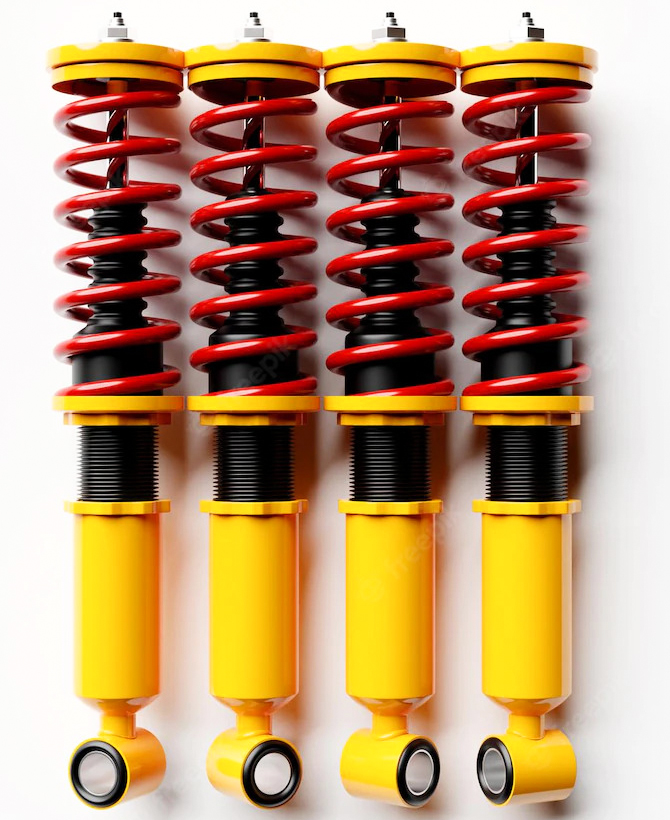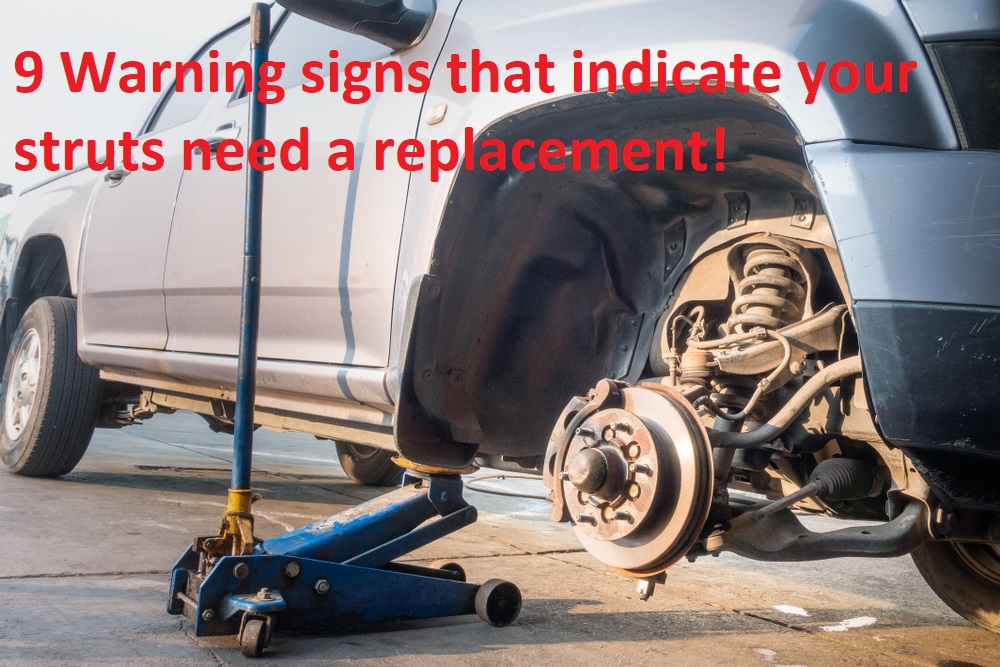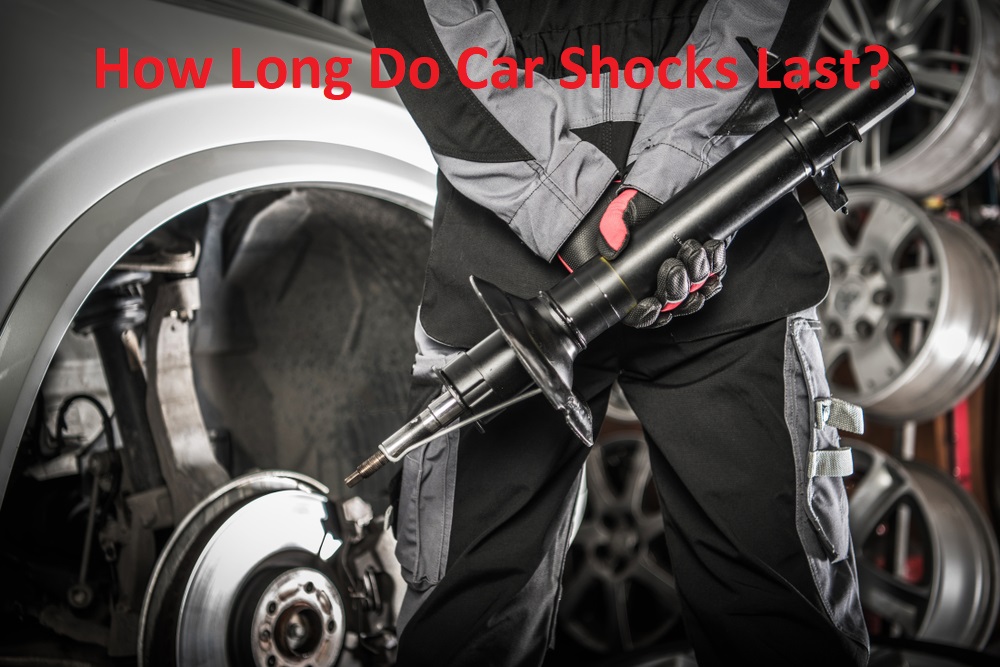Are you excited by the idea of lowering your car? Can’t decide between Lowering Springs vs. Coilovers? It’s fine because you are not alone.
Coilovers and lowering springs are two of the most effective ways to lower your ride height.
But most people struggle to choose between the two simply because they lack the knowledge.
While reading a good piece of text will help you understand the differences, you still might not be able to come to a decision.
That’s why I will explain both the mechanical and practical differences to help you make an informed decision.
A lowered vehicle sure looks sleek, makes the ride height physically appealing, and provides greater stability.
More importantly, it enhances aerodynamics by allowing less air to go underneath the car.
But let’s see which one is the right choice for you!
What are Lowering Springs?
Lowering springs are an economical and safe way to lower your ride height. They actually lower your vehicle and have fixed spring rates.
Some of the best quality products are manufactured in Germany, Japan, and the USA.

These high-quality factory springs are often made with high-tensile cold-wound steel that offers extra durability, thanks to the powder coatings.
Moreover, they can also come equipped with progressive springs with varying spring pre load rates for better shock absorption.
However, not all lowering springs have a progressive spring rate. Some models also come equipped with a linear spring build.
With these, the spring rate remains constant and handles weight and shock accordingly.
Keep in mind that while progressive springs offer a smoother ride quality experience, they also make the suspension a bit stiffer.
What Do Lowering Springs Do?
Coming to the real deal, lowering springs are designed to lower the stance of the vehicle. They are an aftermarket update that can be installed on any car or truck.

You can replace your stock OEM coil spring with a lowering spring at the front and rear for a low profile.
As for the lowering range, typically, this is between 0.5 to 3.0 inches for most.
You can also choose to install the lowering spring kits along with aftermarket shock absorbers or the usual OEM shocks.
However, aftermarket shock absorbers are recommended as they enhance the overall ride quality experience.
One thing to note is that springs kits offer you a non-adjustable ride height.
This means that once you install them on your car, they will be set at the stance permanently.
You will not be able to adjust the height by raising or lowering it. However, you could adjust the shock damping.
You will also benefit from the enhanced stability that most lowering springs typically offer.
Since the vehicle is brought down, the center of gravity is also lowered.
As a result, the vehicle’s suspension performance driving becomes responsive, resulting in a reduced overall body roll.
So, if you are one of those car enthusiasts looking to lower your ride height for a more attractive look, lowering springs are what you need.
They are a cost-effective way to achieve a lowered stance, greater stability, improved traction, and reduced wheel hop in the rear.
But before you decide, read on to learn the differences between lowering springs and coilovers because they offer more or less similar functions.
What Are Coilovers?

The lowering springs and coilovers debate is a pretty common one. This is because they are both great alternatives.
However, there are some differences in functionality between the two.
Quality coilovers are a better option because they come in many different setups.
As a result, you can use them for the track as well as for daily driving.
More importantly, the purpose of coilovers is to allow you to adjust your ride height and camber plates. Instead of making you stuck in one setting, like lowering springs.
You must have also come across the misconception that coilovers are not suitable for daily driving. Let me break it to you this is not true at all.
Coilovers are known to make the ride a bit stiffer and harsher. However, that only happens if you invest in low-quality sets.
Moreover, you can also find numerous affordable coilover models that are specifically made for street comfort.
You get to experience a lowered ride height, increased stability, and ride height adjustable, all with a comfortable driving experience.
What Do Coilovers Do?

If you own a performance vehicle, you can benefit from the wide range of tunability and adjustability of coilovers.
The coilover shock and spring combination of a coilover comes in a single unit.
However, unlike traditional shocks, you can adjust the spring height individually with a coilover.
This allows for greater adjustability and customization as per your needs.
You can tune the shocks for a softer or firmer ride while adjusting the spring to raise or lower the vehicle for a more appealing look.
More importantly, raising or lowering the ride height also means raising or lowering the center of gravity.
Therefore, adjusting the responsiveness and overall handling of the ride.
As a result, coilovers are a great option, especially if you often find yourself changing the wheels and tires.
With coilovers, you can make adjustments to the height and stiffness according to the new wheel and tire size. Moreover, coilovers also allow you to eliminate wheel gaps and clear larger tires and wheels.
Most manufacturers include single, double, triple, or quadruple adjustable shocks in the coilovers.
You can tune the shock for rebound and compression as per your needs and comfort.
But the best part about all this is the control you have over the suspension’s performance on open roads, hard corners, etc.
Finally, coilovers last for years if maintained properly for your convenience.
Lowering Springs vs. Coilovers: The Deciding Factors

Now that we have discussed both lowering springs and coilovers individually, it is time to put them face-to-face to understand the practical differences.
These differences are more practical and have been included so you can make a decision for yourself.
There is no standard piece of aftermarket components that is the best.
What works best for you might not work for someone else at all.
This is because one has to consider their ride type, driving conditions, and the expectations from suspension technology.
All these combined help determine which aftermarket suspension addition is most suitable for you.
Lowering Springs vs. Coilovers for Street Use
If you have no plans to take your ride to the track and use it as a daily driver on the streets, a set of lowering springs will do the job.

More importantly, oem springs won’t break your bank if you don’t have enough money to invest.
Street use does not require the level of customizability and precision that coilovers offer. As a result, you can also save some money and choose a lowering spring.
However, if you pursue quality and adjustability, you should definitely go for coilovers.
This is because coilovers work better for the track.
As a result, there are models that are designed to assist ride experience in day-to-day street use.
You just have to look for the right model.
Light Track Use
If you are getting an aftermarket suspension upgrade solely for track use, coilovers are the way to go.

You will definitely benefit from the variable setups of a coilover to tackle the thrill and unpredictability of a racetrack.
You need a vehicle that is ready to adapt to any condition, and nothing can do it better than coilovers.
Lowering springs are not suitable for track use due to their non-adjustable ride height. This is a drawback when surrounded by performance vehicles equipped with coilovers.
Keep in mind that this does not mean you cannot use lowering springs on tracks. You sure can. However, they will not offer the same level of ride experience as coilovers.
Ride Quality Comparison
The ride quality might be the defining factor for most when it comes to the lowering springs and coilovers debate.
While coilovers are known to offer a smoother ride experience with more flexibility, lowering springs are no less.
You can have an excellent ride quality experience using both, but coilovers surpass in terms of ride comfort.
Nevertheless, a good pair of lowering springs can do the job just right.
If the ride quality is not your top priority and you are on a tight budget, they are just fine.
Lowering Springs vs. Coilovers for Price

This is what I have been mentioning since the start of this section: coilovers are a more costly upgrade.
As a result, you could consider lowering springs a great value upgrade to your vehicle’s suspension as they offer somewhat similar functionality at a lower cost.
However, if you wish to go all in, nothing should stop you from getting a coilover system upgrade for your suspension.
Another thing to keep in mind is the installation process. Coil overs are relatively more difficult to install and might require the services of a professional.
This adds an additional cost to the overall upgrade.
Conclusion
It is time to break down the lowering springs vs. coilovers discussion so that you can make an easy decision.
A Coilover upgrade is recommended if your weekends are spent at the racetrack and your weekdays on the streets.
Because it can serve both purposes: a quality ride experience both on track and on the usual streets.
If this is not you, then a set of lowering springs will be more than enough.
Another reason that I recommend them for daily driving is that they don’t tend to lower the ride height as much as coil overs.
As a result, you won’t be as vulnerable to speed bumps, uneven roads, and steep driveways as you will be with coilovers.
Therefore, if you just need a more appealing quality for daily driving, save your money and go for lowering springs.
As for coilovers, if you are an enthusiast and want the best experience, regardless of the minor drawbacks, investing more is definitely worth it.
It all comes down to what you want.





